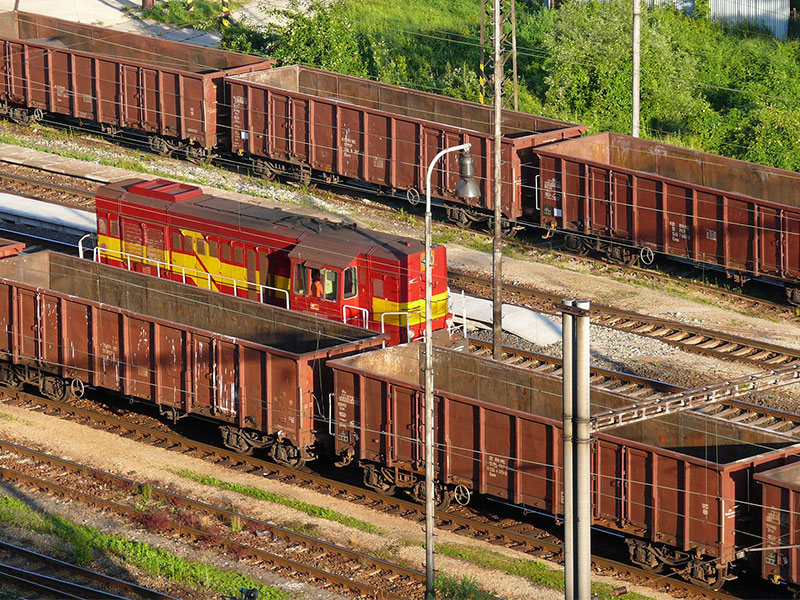Rail Freight Market Study Corridor C (Future Corridor 2)
12.01
From 2012 to 2013
EU Regulation 913/2010 covers nine freight corridors, including the Rotterdam-Antwerp-Luxembourg-Lyon/Basel corridor, for which a transport market study was carried out. TML worked with NEA and EGIS and was responsible for traffic forecasts and the socio-economic context, predicting rail traffic growth with the TRANS-TOOLS model.
EU Regulation 913/2010 on a European rail network for competitive freight provides for the implementation of nine freight corridors. The Rotterdam-Antwerp-Luxembourg-Metz-Dijon-Lyon/Basel freight corridor (Corridor 2/Corridor C) is one of them.
This regulation required a study analysing the transport market on this corridor and elaborating valuable input for the implementation plan. TML collaborated with NEA and EGIS on this transport market study. TML's main task was to develop the traffic forecasts, for which we used the TRANS-TOOLS model. TML also led the tasks related to the geographical and socio-economic context. Furthermore, we were involved in the stakeholder survey.
In 2010, about 34,000 international trains operated on this corridor, including empty trains. Of these, about 75% were loaded with industrial goods (bulk, metal, agriculture, etc.) and 25% with mixed goods, mainly transported in containers. The latter group has the most growth. The modal share of rail is about 8.1% of total freight transport in the geographical area of the corridor. The region around Antwerp is the most active on this corridor.
By conducting interviews, we obtained insight into the advantages and disadvantages of rail transport along Corridor 2. The general opinion is that Corridor 2 has good prospects, but that it is essential to make some improvements in terms of service, organisation, operation, and technical facilities. The study also lists the main barriers, according to the respondents, in the development of the corridor.
The forecasts were made using the TRANS-TOOLS model v2.5 and are based on data collected within the project. Two economic background scenarios (high economic growth and low economic growth), a reference scenario, and a project scenario were analysed for three time points: 2014, 2020, and 2030. Compared to today, the project scenarios lead to an additional growth in number of trains of about 9% in the low scenario and 25% for the high scenario by 2030.
EU Regulation 913/2010 on a European rail network for competitive freight provides for the implementation of nine freight corridors. The Rotterdam-Antwerp-Luxembourg-Metz-Dijon-Lyon/Basel freight corridor (Corridor 2/Corridor C) is one of them.
This regulation required a study analysing the transport market on this corridor and elaborating valuable input for the implementation plan. TML collaborated with NEA and EGIS on this transport market study. TML's main task was to develop the traffic forecasts, for which we used the TRANS-TOOLS model. TML also led the tasks related to the geographical and socio-economic context. Furthermore, we were involved in the stakeholder survey.
In 2010, about 34,000 international trains operated on this corridor, including empty trains. Of these, about 75% were loaded with industrial goods (bulk, metal, agriculture, etc.) and 25% with mixed goods, mainly transported in containers. The latter group has the most growth. The modal share of rail is about 8.1% of total freight transport in the geographical area of the corridor. The region around Antwerp is the most active on this corridor.
By conducting interviews, we obtained insight into the advantages and disadvantages of rail transport along Corridor 2. The general opinion is that Corridor 2 has good prospects, but that it is essential to make some improvements in terms of service, organisation, operation, and technical facilities. The study also lists the main barriers, according to the respondents, in the development of the corridor.
The forecasts were made using the TRANS-TOOLS model v2.5 and are based on data collected within the project. Two economic background scenarios (high economic growth and low economic growth), a reference scenario, and a project scenario were analysed for three time points: 2014, 2020, and 2030. Compared to today, the project scenarios lead to an additional growth in number of trains of about 9% in the low scenario and 25% for the high scenario by 2030.


